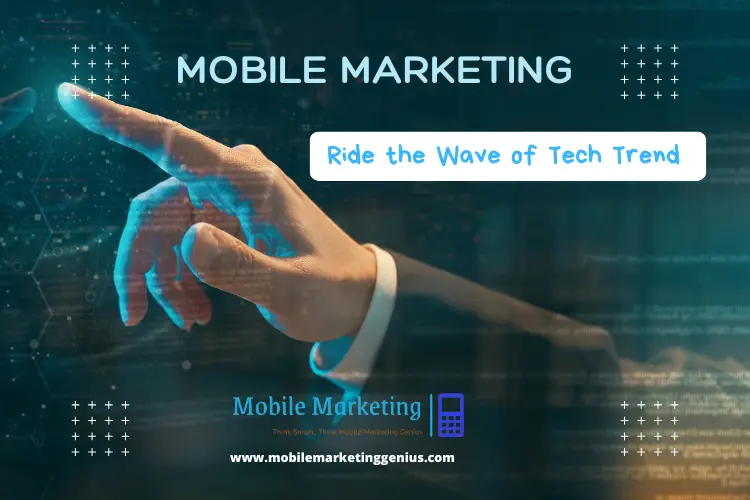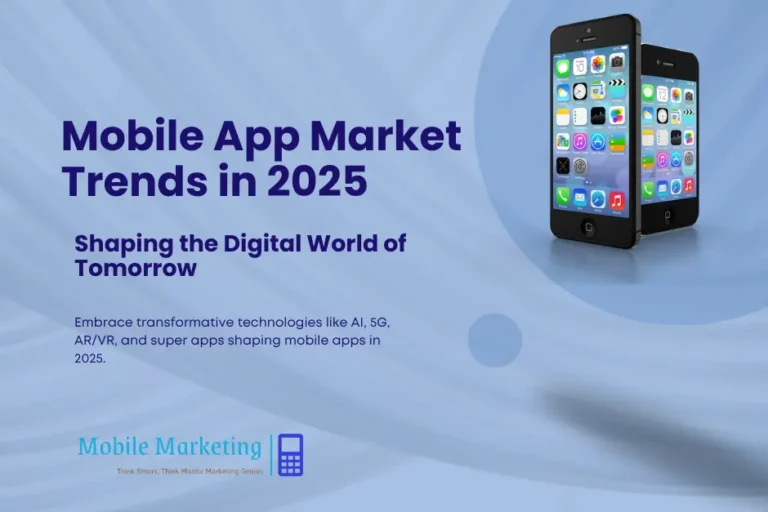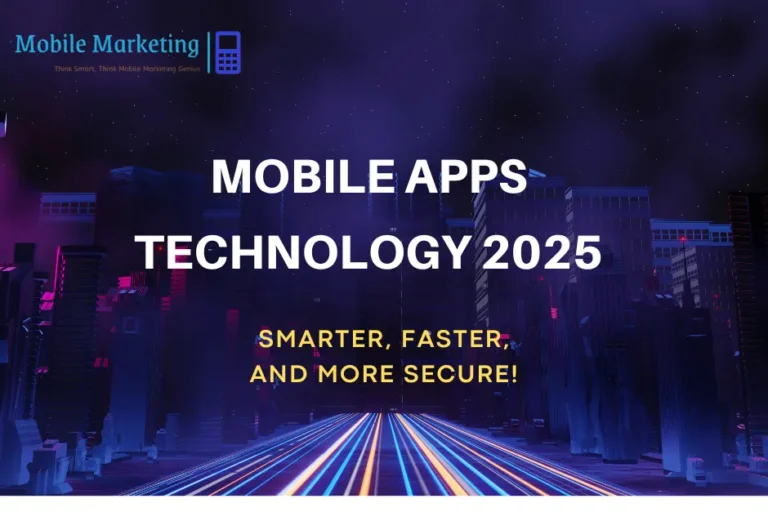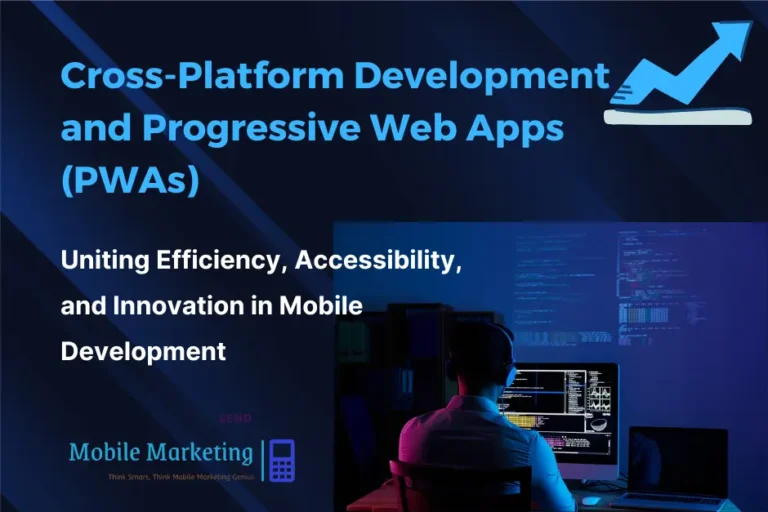Transform Your Business with Cutting-Edge Mobile Marketing Solutions
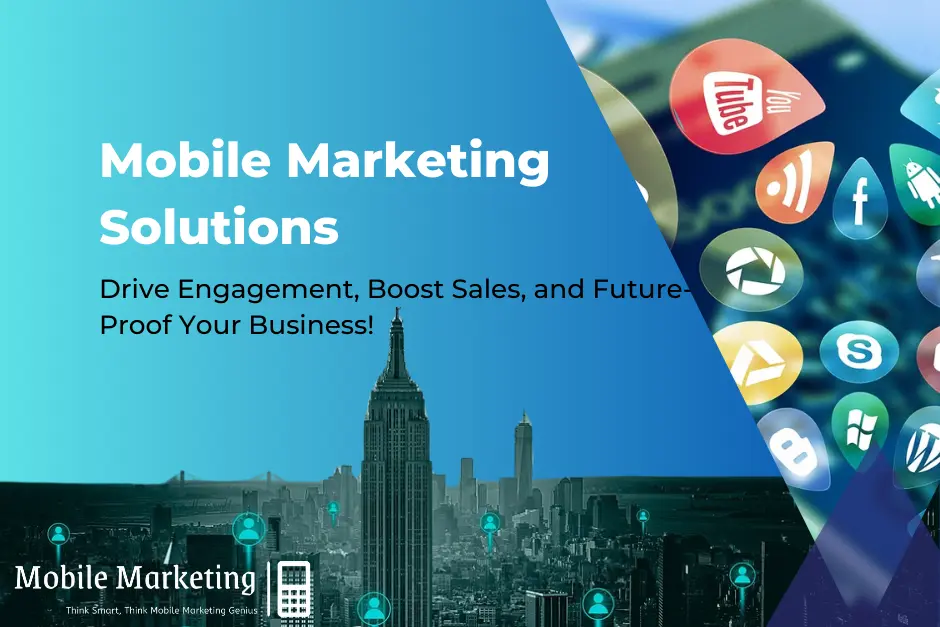
Mobile marketing has emerged as a cornerstone of successful business strategies in our increasingly digital-first world. With over 5 billion mobile users globally, the opportunity to connect with customers through their smartphones is immense. Mobile marketing is not just about reaching customers—it’s about engaging them in meaningful ways that drive loyalty, conversions, and growth.
From SMS campaigns to in-app advertising, mobile marketing offers a wide range of tools to help businesses stand out in a crowded marketplace. Its ability to deliver personalized, timely, and location-based content makes it one of the most effective ways to connect with your audience. Whether you’re a small business owner or a marketing professional, leveraging mobile marketing can help you stay competitive and achieve long-term success.
This comprehensive article will explore how cutting-edge mobile marketing solutions can transform your business. You’ll discover actionable strategies, emerging trends, and practical tips to help you succeed in the mobile-driven world. From understanding your audience to measuring campaign success, this article will equip you with the knowledge and tools you need to unlock the full potential of mobile marketing.
Table of Contents
The Foundations of Mobile Marketing
What is Mobile Marketing?
Mobile marketing refers to the practice of promoting products, services, or brands through mobile devices such as smartphones and tablets. It encompasses a wide range of strategies, including:
- SMS and MMS marketing: Sending text or multimedia messages to customers.
- In-app advertising: Displaying ads within mobile applications.
- Mobile-friendly websites: Ensuring websites are optimized for mobile devices.
- Push notifications: Sending real-time alerts to users’ devices.
- Location-based marketing: Targeting users based on their geographic location.
The goal of mobile marketing is to deliver personalized, timely, and relevant content to users, enhancing their experience and driving engagement.
Why Mobile Marketing is Essential
- Increased Customer Engagement: Mobile devices are an integral part of consumers’ daily lives, making them the most accessible channel for reaching customers.
- Higher Conversion Rates: Mobile campaigns, such as SMS and push notifications, have significantly higher open and click-through rates compared to traditional methods.
- Enhanced Personalization: Mobile marketing allows businesses to collect and analyze user data, enabling highly personalized campaigns.
- Cost-Effectiveness: Mobile marketing is often more affordable and offers a higher return on investment (ROI) than traditional advertising.
Understanding Your Audience
Before diving into mobile marketing, it’s crucial to understand your target audience. Here’s how to get started:
1. Analyze Mobile User Behavior
Use tools like Google Analytics, heatmaps, and social media insights to understand how your audience interacts with your website and apps. Key metrics to track include:
- Bounce rates on mobile devices.
- Time spent on your mobile site or app.
- Most frequently visited pages or features.
2. Create Customer Personas
Develop detailed customer personas that reflect your audience’s demographics, preferences, and pain points. For example:
- Persona A: A tech-savvy millennial who shops online using mobile apps.
- Persona B: A busy professional who prefers quick, convenient solutions like SMS notifications.
3. Segment Your Audience
Divide your audience into segments based on factors like location, purchase history, and engagement levels. This allows you to deliver more targeted and relevant campaigns.
Mobile Marketing Solutions: Strategies, Challenges and Use Cases
Top Mobile Marketing Strategies
To succeed in mobile marketing, businesses must leverage the right strategies. Here are some of the most effective ones:
1. SMS and MMS Marketing
SMS marketing is one of the most direct and effective ways to reach customers. With an average open rate of 98%, it’s a powerful tool for driving action.
- Best Practices:
- Keep messages concise and actionable.
- Include a clear call-to-action (CTA).
- Use MMS to add visuals like images or videos.
- Example: A retail store can send a text message with a discount code to customers who abandoned their carts.
2. Mobile-Optimized Email Marketing
Emails must be optimized for mobile devices to ensure they display correctly and engage users.
- Best Practices:
- Use responsive design to ensure emails load quickly on smartphones.
- Keep subject lines short and compelling.
- Include clickable buttons for easy navigation.
- Example: An e-commerce brand can send personalized product recommendations via email, with links that direct users to their mobile app.
3. Social Media Advertising on Mobile Platforms
Platforms like Instagram, Facebook, and TikTok are predominantly accessed via mobile devices.
- Best Practices:
- Use eye-catching visuals and short videos.
- Leverage platform-specific features like Instagram Stories or TikTok challenges.
- Target ads based on user demographics and behavior.
- Example: A fitness brand can run a TikTok challenge encouraging users to share workout videos using a branded hashtag.
4. Leveraging Mobile Apps
If your business has a mobile app, it’s a goldmine for customer engagement.
- Best Practices:
- Offer exclusive app-only deals and rewards.
- Use push notifications to re-engage users.
- Provide a seamless user experience with intuitive navigation.
- Example: A food delivery app can send push notifications about limited-time discounts to users who haven’t ordered in a while.
Overcoming Challenges in Mobile Marketing
While mobile marketing offers numerous benefits, it also comes with challenges. Here’s how to address them:
1. Data Privacy Concerns
Ensure compliance with regulations like GDPR and CCPA to protect user data. Be transparent about how you collect and use customer data.
2. Ad Fatigue
Limit the frequency of your messages and focus on delivering value. For example, send personalized offers rather than generic promotions.
3. Technical Issues
Test your campaigns thoroughly before launch. Use responsive design and ensure your website and apps are optimized for all devices.
Case Studies and Success Stories
1. Starbucks
Starbucks has mastered mobile marketing through its loyalty app, which offers personalized rewards, mobile ordering, and payment options. The app has driven significant customer engagement and increased sales.
2. Domino’s Pizza
Domino’s uses a combination of SMS marketing, push notifications, and a mobile-friendly website to make ordering pizza quick and easy. Their “AnyWare” campaign allows customers to order through various platforms, including smartwatches and voice assistants.
3. Sephora
Sephora’s mobile app features AR technology that lets users try on makeup virtually. This innovative approach has enhanced the customer experience and boosted online sales.
How to Get Started with Mobile Marketing
Ready to harness the power of mobile marketing? Whether you’re a small business owner or a marketing professional, getting started with mobile marketing doesn’t have to be overwhelming. Here’s a step-by-step guide to help you build a strong foundation and launch effective campaigns:

Step 1: Assess Your Current Strategy
Before diving into mobile marketing, evaluate your existing marketing efforts to identify gaps and opportunities. Ask yourself:
- Is my website mobile-friendly?
- Do I have a mobile app, and if so, is it engaging users effectively?
- Are my email campaigns optimized for mobile devices?
- Am I leveraging social media platforms that are popular on mobile?
Actionable Tip: Use tools like Google’s Mobile-Friendly Test to check if your website is optimized for mobile devices. If not, prioritize responsive design to ensure a seamless user experience.
Step 2: Set Clear Goals
Define what you want to achieve with mobile marketing. Clear goals will guide your strategy and help you measure success. Common goals include:
- Increasing brand awareness.
- Driving sales or conversions.
- Improving customer retention and loyalty.
- Enhancing user engagement through personalized experiences.
Example: If your goal is to increase sales, focus on strategies like SMS marketing with exclusive discounts or push notifications for abandoned carts.
Step 3: Understand Your Target Audience
To create effective mobile marketing campaigns, you need to understand your audience’s behavior, preferences, and pain points. Here’s how:
- Analyze Mobile User Behavior: Use tools like Google Analytics to track how users interact with your website or app on mobile devices. Look for patterns in bounce rates, session duration, and popular pages.
- Create Customer Personas: Develop detailed profiles of your ideal customers, including demographics, interests, and mobile usage habits.
- Segment Your Audience: Divide your audience into groups based on factors like location, purchase history, or engagement level. This allows you to deliver more targeted and relevant campaigns.
Example: A coffee shop might segment its audience into “frequent visitors” and “first-time customers,” sending personalized offers to each group.
Step 4: Choose the Right Tools and Platforms
Select the mobile marketing channels and tools that align with your goals and audience. Here are some popular options:
- SMS and MMS Marketing: Ideal for direct, time-sensitive communication.
- Mobile Apps: Great for businesses looking to build long-term customer relationships.
- Social Media Platforms: Perfect for reaching younger audiences on platforms like Instagram, TikTok, and Snapchat.
- Email Marketing: Effective for personalized, long-form content.
Actionable Tip: If you’re just starting out, focus on one or two channels that align with your audience’s preferences. For example, if your target audience is active on Instagram, prioritize social media advertising.
Step 5: Create Mobile-Optimized Content
Your content must be tailored for mobile devices to ensure a positive user experience. Here’s how to do it:
- Responsive Design: Ensure your website and emails adapt to different screen sizes and load quickly on mobile devices.
- Concise Copy: Keep your messaging short and to the point. Mobile users have shorter attention spans, so make every word count.
- Visual Appeal: Use high-quality images, videos, and interactive elements to capture attention.
- Clear CTAs: Include prominent and clickable call-to-action buttons that guide users toward the desired action.
Example: An e-commerce brand can create a mobile-friendly email with a bold CTA like “Shop Now” that directs users to a product page optimized for mobile.
Step 6: Leverage Automation Tools
Automation can save time and improve the efficiency of your mobile marketing efforts. Here are some tools to consider:
- Email Marketing Platforms: Tools like Mailchimp and HubSpot allow you to automate email campaigns based on user behavior.
- Push Notification Services: Platforms like OneSignal and Firebase enable you to schedule and personalize push notifications.
- Chatbots: Use AI-powered chatbots to provide instant customer support and engage users in real-time conversations.
Actionable Tip: Set up automated workflows for common scenarios, such as sending a welcome message to new app users or a follow-up email after a purchase.
Step 7: Measure and Optimize
To ensure the success of your mobile marketing campaigns, track performance and make data-driven improvements. Here’s how:
- Key Metrics: Monitor metrics like open rates, click-through rates, conversion rates, and ROI.
- A/B Testing: Experiment with different versions of your campaigns to see what works best. For example, test two versions of a push notification with different CTAs.
- User Feedback: Collect feedback from your audience to understand their preferences and pain points.
Example: If your SMS campaign has a low click-through rate, try testing different messaging styles or CTAs to improve engagement.
Your Mobile Marketing Roadmap
- Assess Your Current Strategy: Identify gaps and opportunities.
- Set Clear Goals: Define what you want to achieve.
- Understand Your Audience: Analyze behavior and create customer personas.
- Choose the Right Tools: Select channels and platforms that align with your goals.
- Create Mobile-Optimized Content: Ensure your content is tailored for mobile devices.
- Leverage Automation: Use tools to streamline your efforts.
- Measure and Optimize: Track performance and make data-driven improvements.
By following these steps, you can build a strong foundation for your mobile marketing efforts and set your business up for long-term success.
Advanced Mobile Marketing Techniques
To truly stand out in the competitive mobile marketing landscape, businesses must go beyond the basics and adopt advanced techniques. Here are some strategies to take your mobile marketing efforts to the next level:
1. AI-Driven Personalization
Artificial Intelligence (AI) is transforming mobile marketing by enabling hyper-personalized experiences. AI algorithms can analyze user behavior, predict preferences, and deliver tailored content in real-time.
- Example: An e-commerce platform can use AI to recommend products based on a user’s browsing history, purchase patterns, and even the time of day they are most active.
2. Augmented Reality (AR) and Virtual Reality (VR)
AR and VR are revolutionizing customer engagement by offering immersive experiences. These technologies allow users to interact with products in a virtual environment, enhancing their decision-making process.
- Example: A furniture retailer can use AR to let customers visualize how a sofa would look in their living room before making a purchase.
3. Gamification
Gamification involves incorporating game-like elements into mobile marketing campaigns to boost engagement and loyalty.
- Example: A fitness app can reward users with points and badges for completing workouts, encouraging them to stay active and engaged.
4. Chatbots and Conversational Marketing
Chatbots enable businesses to provide instant customer support and engage users in real-time conversations. They can answer queries, recommend products, and even process orders.
- Example: A travel agency can use a chatbot to help users book flights, hotels, and activities directly through their mobile app.
Measuring Success in Mobile Marketing
To ensure the effectiveness of your mobile marketing campaigns, it’s essential to track performance and make data-driven improvements. Here’s how to measure success:
1. Key Performance Indicators (KPIs)
Track metrics such as:
- Open rates: The percentage of users who open your SMS or push notifications.
- Click-through rates (CTR): The percentage of users who click on links in your ads or emails.
- Conversion rates: The percentage of users who complete a desired action, such as making a purchase or signing up for a newsletter.
- Return on Investment (ROI): The revenue generated from your mobile marketing efforts compared to the cost of running the campaigns.
2. A/B Testing
A/B testing involves experimenting with different versions of your campaigns to see which one performs better.
- Example: Test two versions of a push notification with different CTAs and analyze which one drives more clicks.
3. Customer Lifetime Value (CLV)
CLV measures the total revenue a business can expect from a single customer over the course of their relationship. By increasing CLV through personalized mobile marketing, businesses can maximize their long-term profitability.
4. Heatmaps and User Behavior Analysis
Heatmaps provide visual representations of how users interact with your mobile site or app. Use this data to identify areas for improvement and optimize the user experience.
Future Trends in Mobile Marketing
The mobile marketing landscape is constantly evolving, driven by technological advancements and changing consumer preferences. Here are some trends to watch in the coming years:
1. The Rise of 5G
The rollout of 5G networks will enable faster data speeds and lower latency, opening up new possibilities for interactive content, such as live streaming and augmented reality (AR).
2. Voice Search Optimization
With the growing popularity of voice assistants like Siri and Alexa, optimizing for voice search is becoming increasingly important.
- Best Practices: Focus on conversational keywords, provide concise answers to frequently asked questions, and ensure your website is mobile-friendly.
3. Integration with IoT
The Internet of Things (IoT) is creating new opportunities for mobile marketing. For example, smart home devices can deliver personalized ads based on user behavior and preferences.
4. Short-Form Video Content
Platforms like TikTok and Instagram Reels are driving the demand for short-form video content. Businesses that embrace this trend can capture the attention of younger audiences.
5. Wearable Technology
The rise of wearable devices, such as smartwatches and fitness trackers, offers new channels for mobile marketing.
- Example: A fitness brand can send real-time workout updates and motivational messages to users’ smartwatches.
Conclusion
Mobile marketing is no longer just an option—it’s a necessity for businesses looking to thrive in today’s digital landscape. By leveraging cutting-edge strategies like SMS marketing, personalized push notifications, and AI-driven campaigns, you can connect with your audience in meaningful ways that drive engagement, loyalty, and growth.
The future of mobile marketing is bright, with emerging trends like 5G, augmented reality, and voice search optimization opening up new possibilities for innovation. Businesses that embrace these advancements and stay ahead of the curve will be well-positioned to succeed in an increasingly competitive market.
Whether you’re a small business owner or a marketing professional, the key to success lies in understanding your audience, delivering personalized experiences, and continuously optimizing your campaigns. Start small, measure your results, and refine your approach to unlock the full potential of mobile marketing.

